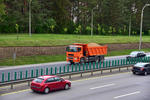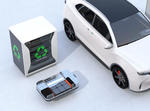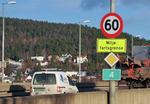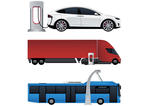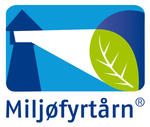250.000 NOK grant from FME MoZEES
Members of the project consortium are all partners in FME MoZEES: the Norwegian Research Center on Zero Emission Energy Systems for Transport. The consortium was one of four successful applicants to FME MoZEES’s pre-project fund.
The project partners are grateful for the support from FME MoZEES and have already begun the data collection to make headway before the summer holidays.
Why is bulk shipping interesting?
In 2020, Heidelberg Cement and Felleskjøpet Agri partnered to release a joint request for interest to build a zero-emission bulk ship – it is due to be in operation early 2024.. They received 31 offers from different consortiums wanting to build the vessel. In April 2021, Viridis Bulk Carriers was established to provide a fleet of ammonia driven bulk vessels by 2024. But why could this vessel segment be easier to decarbonise than others?
Graphic representation of hydrogen supply chains from energy source to end user (Big Fish)
Fixed routes: Some bulk ships operate between a small number of ports, therefore if adequate bunkering can be provided at one or two ports, then the vessels will always have access to zero-emission fuel. However, this is not the case for all vessels, where flexibility and range are still important to be able to serve customers, for example from northern Norway to the southern ports of Northern Europe.
No passengers: Unlike ferries and cruise ships, bulk ships do not have passengers. Therefore, they do not have many untrained people onboard nor are they required to bunker close to large numbers of people.
Space on board: Although maximising cargo capacity is crucial for ship owners, typically there is space at the aft (back) of the vessel where there is no cargo hold which could be utilised for zero-emission fuel storage.
The favoured zero-emission fuel for bulk-ships is dependent upon many factors, key ones being: route, power requirements and space on board. Therefore hydrogen, ammonia, LOHC, or others can all be relevant
Building on previous work in HyInfra
Norwegian domestic maritime emissions in 2018 were according to DNV 4,3Mtonne CO2. Bulk shipping accounts for approximately 8% (0.36 million tonne CO2) of these emissions.
“In the HyInfra project, OHC previously looked at the offshore sector, high speed passenger vessels, Kystruten and ferries - these fleets account for approximately 44% of all domestic emissions. It was estimated that to decarbonise these fleets there would be an annual demand in 2035 of 39,000 tonnes of hydrogen, and between 0,5 and 1,3 million tonnes of ammonia.
We are pleased to have been successful in the application, ensuring that this project will add a new maritime segment to those already covered in HyInfra. This will further develop our understanding on fuel demand and suitable bunkering locations.”
Ocean Hyway Cluster holds an interactive map updated showing infrastructure of hydrogen-based fuels in Norway
Detailed ship traffic data (AIS)
The Norwegian Coastal Administration’s (Kystverket) vision is to make the Norwegian coastal and sea areas the safest and cleanest in the world. By sharing detailed ship traffic (AIS) data with the project partners, we hope it can be used to find effective production, distribution and bunkering hubs for zero-emission fuels along the coast.
Energy model using AIS Data
“TØI is grateful for the successful outcome of the application. We will use the funding to work with our model (AISEEM) which analyses movement patterns and calculates vessel movement energy and emissions from AIS data supplied by Kystverket. AISEEM has been previously applied for high and slow speed passenger vessels, and we look forward to expanding the model to include the bulk-ship segment. Results can give input to understanding the possibility of zero-emission technology use for this segment, which can be of interest to multiple stakeholders”
Identifying production hubs
IFE is delighted to take part in this collaboration. The funding will allow us to build upon previous work and expand our understanding of the interaction between energy and transport sector, in this case understand better how the energy can be supplied for upcoming zero-emission Norwegian bulk ships. We aim to identify production hubs for the zero-emission fuels needed and identify possible synergies with existing projects to optimise use of the existing and planned infrastructure.
Presentation of findings and further work
The results will be presented at the annual FME MoZEES meeting in November 2022, as well as a webinar for Ocean Hyway Cluster members.
Secondary objectives are to identify routes and vessels that are particularly promising for adoption of zero-emission operation from a year 2026 perspective, and to identify weaknesses in the underlying data foundation to make recommendations for improvements.
Interested to hear more?
Contact researchera at TØI Ingrid Sundvor or Rebecca Thorne.






